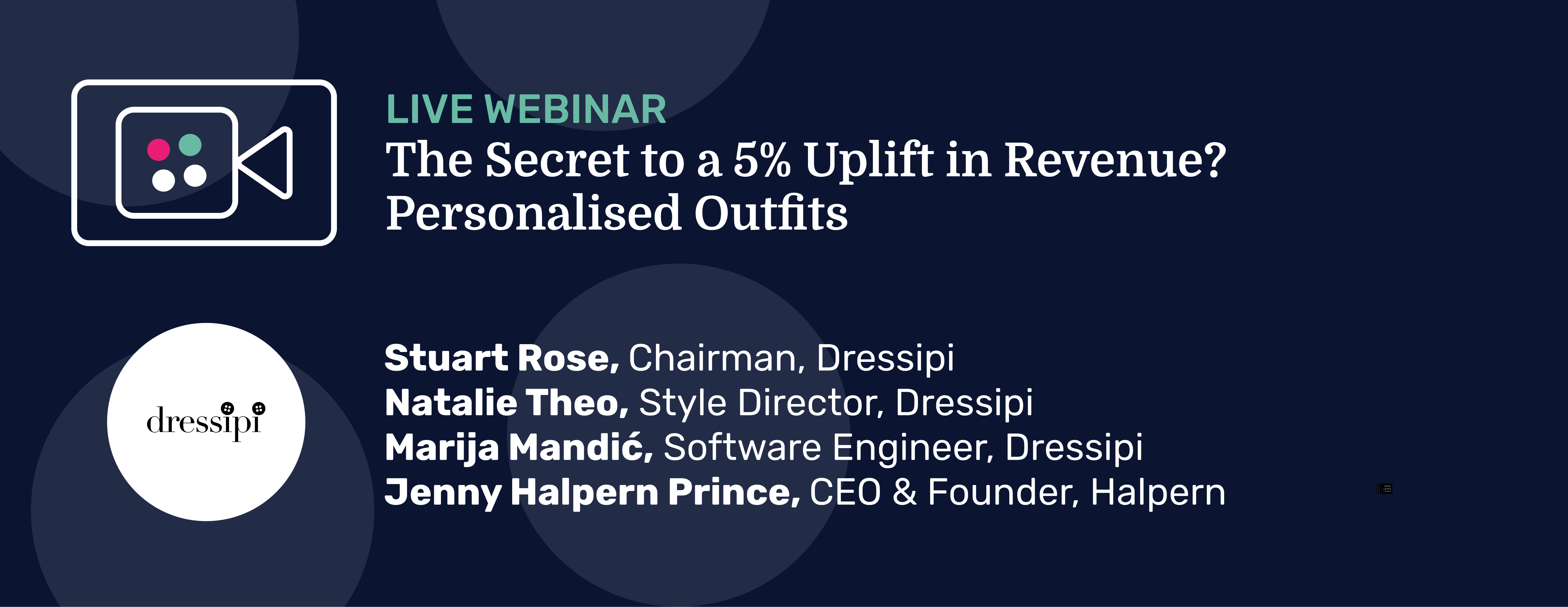The main takeaways from our Personalized Outfits Masterclass.
We have always known outfits are at the core of how customers shop. Taking you back to when Dressipi first started, the team, including Style Director, Natalie Theo, took 200 women, who uploaded 30 items from their wardrobe. From these items and 5 new recommended items to update their wardrobe, 20 outfits per customer were created. That is a total of 6000 unique outfits and 1000 new items recommended to update clients’ wardrobes. A huge 75% of these 1000 products were bought.
“If this could be turned into technology that would be pretty amazing.” - Natalie Theo
Natalie and Software Engineer, Marija Mandic spoke at our recent Masterclass about how we took that manual expertise and turned it into something technical that could be scaled and create real value. Watch the full masterclass here and read our key takeaways below:
1) The quality and accuracy of attributes is critical
At Dressipi we have around 35 different attributes per product. This taxonomy of garment features is completely unique to Dressipi, not existing anywhere else in the retail industry. And it is this taxonomy that allows us to scale this technology, building 100 million outfits per night for John Lewis.
It is very important that these attributes are accurate. When it comes to necklines, a crew, a round and a scoop neck are all types of “round” necklines but they differ in the way a customer’s collar bones are exposed. Therefore, they suit different customer types and the return rate is impacted if you recommend the wrong garment. We know that customers who have a large bust tend to return more crew neck items over round and scoop neck items.
Computer vision models cannot get a high level of accuracy differentiating between these three attributes but it is critical to get them right or you’ll end up with a substandard outfit, a disappointed customer and increased return rates. Having accurate data down to the fine level of detail that Dressipi provides is key.
The tech team at Dressipi are always testing different technologies from image and text classification up to human labelling:
“We find that a hybrid approach will deliver the best results. If we only rely on computer vision models, they are still not good enough because they don’t give high accuracy predictions.” - Marija Mandic
Read more on generating outfits from technology and the importance of attributes in Marija’s blog post here.
2) Outfits need to reflect diversity and versatility
Outfits showing what the model is wearing are a great starting point, but imagine if you could deliver the same styling in a way that was completely in line with each customer’s preferences.
Outfits need to be personalized because not only do customers come in all different shapes and sizes but one customer’s idea of “casual” might be another customer’s “far-out-there”. Showing personalized outfits in the context of a customer’s lifestyle allows retailers to reflect this diversity.
Personalized outfits can also be shown in the context of different occasions. Below, on John Lewis, Natalie and Marija have been shown the versatility of an L.K.Bennett dress in a way that is right for them, manifesting in very different recommendations:
“I like high heels, I don’t like yellow and I have explicitly told John Lewis to not show me yellow. I also don’t wear trainers.” - Natalie Theo
“I don’t mind wearing heels for evening occasions but for casual everyday wear, I don’t want to see them. For the final outfits, I am only seeing trainers.” - Marija Mandic
When a customer comes to your website, you really want to elevate that experience with them, making them feel that you really understand them. Personalized outfits can do this whilst staying in keeping with a brand’s DNA.
Conclusion
“Every garment in your inventory gets a lot of love.” - Natalie Theo
Somewhere someone loves your garment and what our technology can do is to show that garment to someone that might love it.
We went from testing 200 customers to now working with global retailers, testing our outfits with tens of millions of customers. We have the results and know that personalized outfitting and showing the versatility of a garment is very financially compelling.
If you have any questions or you’d like to speak to us directly about how we could help you get started on delivering truly personalized outfits at scale, please get in touch.

